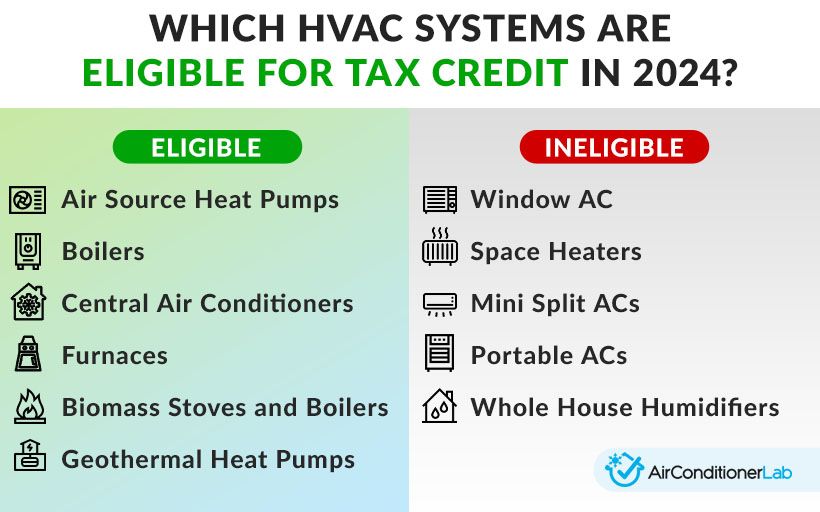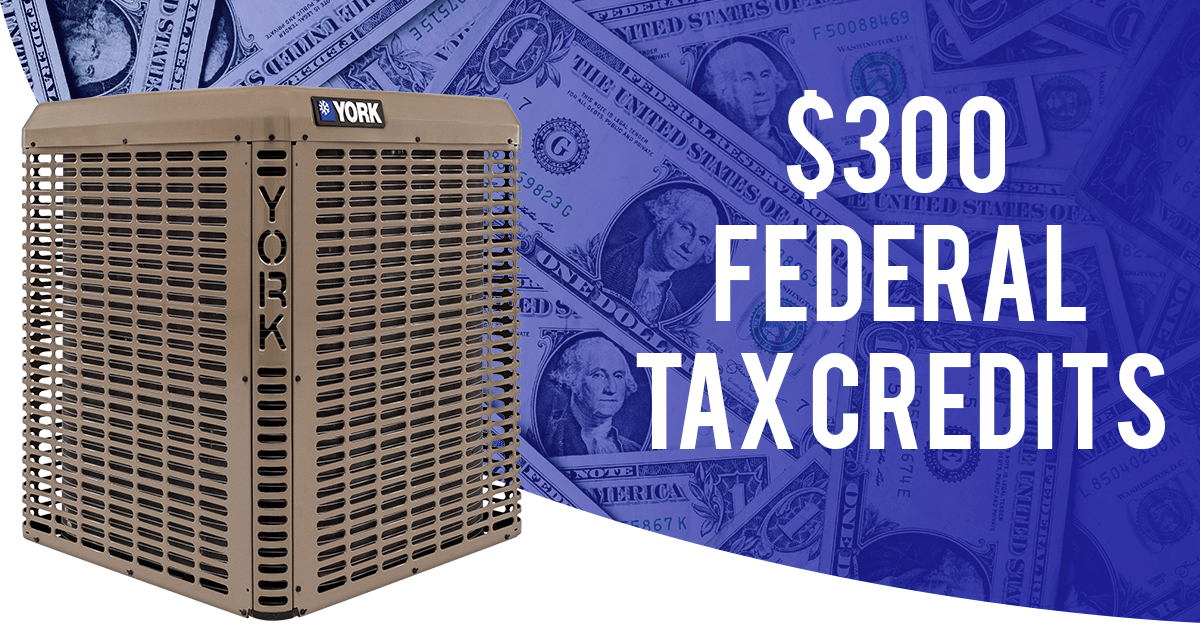Central Air Conditioners Tax Credit 2024

Summer is here, and you're probably cranking up your central air conditioner to stay comfortable. But what happens when your system isn't performing as it should? Maybe it's blowing warm air, or the house isn't cooling evenly. Before you panic and call for expensive repairs, let's explore some common issues and how you can troubleshoot them yourself. Plus, we'll touch on how a new, energy-efficient system could potentially qualify you for the Central Air Conditioners Tax Credit 2024, making upgrading a financially smart move.
The Case of the Lukewarm Air: A Troubleshooting Guide
One of the most frequent complaints homeowners have is that their central AC is blowing lukewarm or even warm air. This can be incredibly frustrating, especially when you're expecting a blast of cool relief. Let's dive into a systematic approach to diagnose and potentially fix the problem.
Step 1: The Obvious Checks (No Tools Required!)
Before grabbing any tools, let's start with the simple things:
- Thermostat Settings: Sounds basic, but is your thermostat set to "Cool"? Is the temperature set lower than the current room temperature? Sometimes it's as simple as a setting accidentally changed. Also, make sure the thermostat is set to "Auto" instead of "Fan Only." "Fan Only" will circulate air but won't activate the cooling function.
- Air Filters: A clogged air filter is the #1 culprit behind many AC problems. A dirty filter restricts airflow, making the system work harder and less efficiently. Check your air filter immediately! Where is it located? (Usually behind a vent cover inside your home, or in the air handler unit in your attic, basement, or closet). Is it visibly dirty, dusty, or matted?
- Outdoor Unit Obstructions: Take a walk around your outdoor AC unit (the condenser). Is anything blocking it? Bushes, weeds, leaves, or even snow (if it’s early in the cooling season) can restrict airflow and cause overheating.
- Circuit Breaker: Check your home's electrical panel. Look for the breaker labeled "AC," "Air Conditioner," or "HVAC." Has it tripped (is the switch in the "off" or middle position)?
Step 2: DIY Checks with Basic Equipment (Use Caution!)
If the obvious checks didn't reveal the problem, let's move on to a few things you can investigate with some basic tools. Always turn off the power to the AC unit at the breaker before performing any of these checks! Safety first!
- Clean the Outdoor Unit (Condenser): If the outdoor unit is dirty, it can't dissipate heat efficiently. Turn off the power at the breaker. Use a garden hose (no high-pressure washers!) to gently spray the fins from the inside out, removing any dirt, leaves, or debris. Be careful not to bend the fins. A fin comb (available at most hardware stores) can help straighten bent fins.
- Check the Indoor Unit (Evaporator Coil): The evaporator coil is located inside your indoor air handler unit. Accessing it usually requires removing an access panel. Turn off the power at the breaker! Is the coil visibly iced up? If so, this could indicate a refrigerant leak or airflow problem. Do not attempt to defrost the coil yourself with a heat gun or other tools. If you see ice, turn the system off and let it thaw naturally. Then, try running the system with only the fan on to see if the airflow improves. But consider calling a professional to check the refrigerant.
- Inspect the Condensate Drain Line: The condensate drain line removes moisture from the system. A clogged drain line can cause water to back up and shut down the system. Find the drain line (usually a PVC pipe near the indoor unit). Is it dripping? If not, it might be clogged. You can try using a wet/dry vacuum to suck out any clogs from the drain line opening. Be careful not to dislodge the drain line.
- Capacitor Check (Advanced DIY - Proceed with Extreme Caution!): The capacitor is an electrical component that helps start and run the AC motor. A failing capacitor is a common cause of AC problems. This check involves working with electricity and should only be attempted if you have experience and are comfortable with electrical work. Wear insulated gloves and use extreme caution. You'll need a multimeter to test the capacitor. Disconnect the power at the breaker. Discharge the capacitor (there are tutorials online showing how to do this safely - do not skip this step!). Use the multimeter to measure the capacitance. If the reading is significantly different from the rating printed on the capacitor, it likely needs to be replaced. Replacing a capacitor is often best left to a professional, as it involves working with high voltage. Improper handling can be dangerous.
Step 3: When to Call a Professional
If you've tried the above steps and your AC is still blowing warm air, it's time to call in the professionals. Here are some signs that the problem is beyond your DIY capabilities:
- Refrigerant Leaks: Refrigerant is crucial for cooling. If you suspect a leak (e.g., hissing sounds, ice buildup on the evaporator coil, poor cooling performance), do not attempt to fix it yourself. Refrigerant handling requires specialized equipment and training. Plus, it's illegal to knowingly release refrigerant into the atmosphere.
- Electrical Issues: If you're uncomfortable working with electricity, leave electrical repairs to a licensed electrician or HVAC technician.
- Compressor Problems: The compressor is the heart of the AC system. If it's making strange noises or not running at all, it likely needs professional attention. Compressor repairs are complex and expensive.
- Major Component Failures: If you suspect a major component like the evaporator coil, condenser coil, or blower motor has failed, it's best to consult with a professional.
- You're Just Not Comfortable: If you're not comfortable performing any of these checks, don't hesitate to call a professional. It's better to be safe than sorry.
The Central Air Conditioners Tax Credit 2024: Could Upgrading Save You Money?
Even if you manage to fix your current AC system, it might be worth considering an upgrade. Older AC units are often less energy-efficient than newer models, leading to higher energy bills. Plus, upgrading to a qualifying system could make you eligible for the Central Air Conditioners Tax Credit 2024.
What is the Central Air Conditioners Tax Credit 2024?
The Inflation Reduction Act of 2022 significantly enhanced energy-efficient appliance tax credits, including those for central air conditioners and heat pumps. This tax credit aims to incentivize homeowners to invest in energy-efficient equipment, reducing their carbon footprint and lowering their energy costs.
How Does It Work?
The Central Air Conditioners Tax Credit 2024 is a credit against your federal income taxes. The amount of the credit depends on the efficiency of the new system you install. Generally, the more energy-efficient the system, the larger the tax credit.
What Systems Qualify?
To qualify for the tax credit, the new central air conditioner or heat pump must meet certain energy efficiency standards. These standards are typically based on:
- SEER2 (Seasonal Energy Efficiency Ratio 2): Measures cooling efficiency.
- EER2 (Energy Efficiency Ratio 2): Measures cooling efficiency at a specific operating point.
- HSPF2 (Heating Seasonal Performance Factor 2): Measures heating efficiency for heat pumps.
The exact efficiency requirements can vary, so it's crucial to consult with a qualified HVAC contractor and review the IRS guidelines to ensure the system you're considering meets the criteria for the tax credit.
How Much is the Tax Credit Worth?
The tax credit can be up to 30% of the cost of the new equipment, including installation, up to a maximum of $2,000. However, there are annual limits for different types of energy-efficient home improvements, so it's essential to understand the specific rules and limits. Consulting with a tax professional is highly recommended.
How to Claim the Tax Credit:
- Purchase and Install a Qualifying System: Make sure the system meets the efficiency requirements for the tax credit. Retain all documentation, including receipts and manufacturer specifications.
- Keep Detailed Records: Keep all receipts and documentation related to the purchase and installation of the system.
- File IRS Form 5695: You'll need to file IRS Form 5695, Residential Energy Credits, with your federal income tax return.
- Consult a Tax Professional: Tax laws can be complex. Consulting with a tax professional can help you ensure you're claiming the correct amount of the tax credit and complying with all applicable regulations.
Is Upgrading Right for You?
Deciding whether to upgrade your AC system is a personal decision. Consider the following factors:
- Age of Your Current System: Older systems are generally less efficient and more prone to breakdowns.
- Energy Bills: Are your energy bills higher than expected? An inefficient AC system could be the culprit.
- Repair Costs: Are you constantly paying for AC repairs? It might be more cost-effective to replace the system.
- Tax Credit Eligibility: Could you qualify for the Central Air Conditioners Tax Credit 2024 by upgrading to a more efficient system?
Final Thoughts: Stay Cool and Informed
Troubleshooting your central AC system can save you money and help you stay comfortable. By following the steps outlined in this guide, you can diagnose and potentially fix common problems yourself. However, always prioritize safety and don't hesitate to call a professional when needed. And remember, upgrading to a more energy-efficient system could not only lower your energy bills but also qualify you for the Central Air Conditioners Tax Credit 2024, making it a win-win situation. Stay cool!










